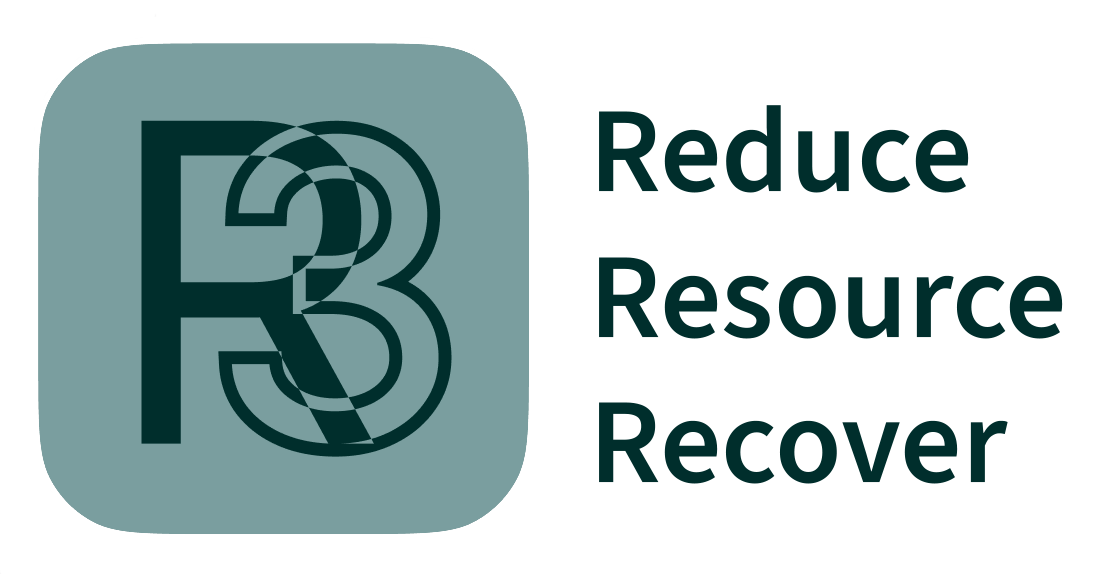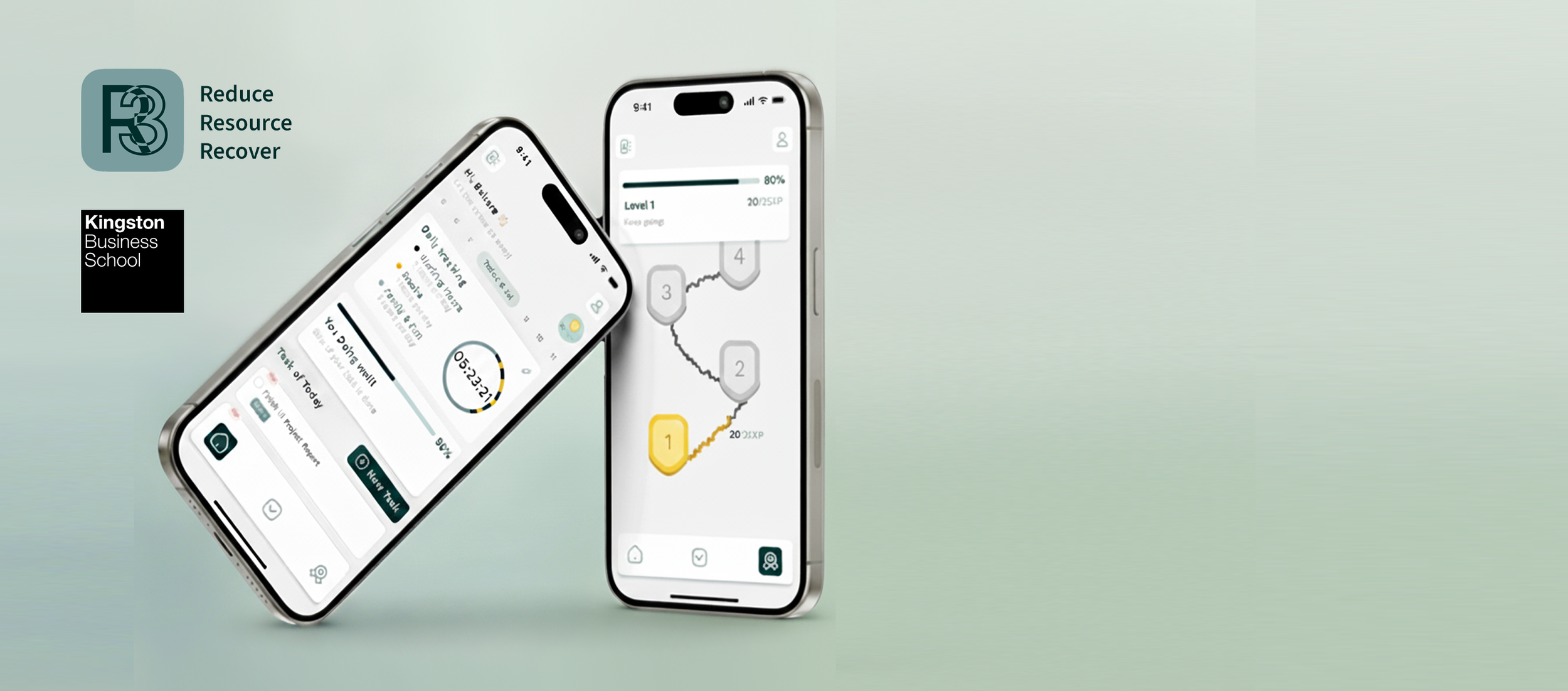A Digital Well-being Tool for Entrepreneurs
Role & Context
My Role: UX Designer, Researcher, UI Designer
Client: Kingston Business School
Project Type: Concept Design, Digital Wellness Tool
Timeline: 6 Weeks, Oct - Nov 2025
The Challenge
Core Problem: High stress and burnout in entrepreneurs due to uncertainty.
Key Pain Point: Poor work/life balance and long hours.
Tools Used: Figma, User Interviews (10), Competitor Analysis.
The Solution
Strategic Foundation: The Reduce, Resource, and Recover (3R) Model.
Core Outcome: A low-friction feature set (reflection, micro-activities) for psychological recovery.Figma, User Interviews (10), Competitor Analysis, Journey Mapping.
Target User: Overwhelmed, Ambitious Founders
Act I: The Problem & The Diagnosis
The Status Quo: Strategic & Academic Context
The challenge originated from ongoing academic research at Kingston Business School that highlighted the critical importance of psychological recovery for entrepreneurs’ well-being and venture sustainability, particularly in combating emotional disengagement.
Our proposed solution was not a speculative idea, but a practical digital intervention based on the client’s scientifically-backed model of recovery from stress: the Reduce, Resource, and Recover (3R) model.
The Problem & Design Mandate
The core problem, as identified by the research, is that existing tools fail to address uncertainty, which is the primary source of entrepreneurial stress. This results in high rates of burnout and poor work/life balance.
Our role, defined by the client brief, was to move the 3R model from a theoretical framework to a scalable, practical digital tool. Success was explicitly tied to:
Co-designing the features and user experience of the tool.
Ensuring high user acceptance and scalability for rigorous pilot testing.
3. Develop: Strategy & Ideation
This section shows your strategic thinking and how you link research to features.
Solution Strategy: Building on the 3R Framework
We built our feature set to directly address the 3R model and counter the specific pain points of our persona.
3R Pillar
Core Feature Concept
Rationale (from Research)
Reduce
Guided Reflection/Journaling
Helps process stress caused by uncertainty and financial pressure.
Resource
Micro-Activity Library (e.g., specific 10-min walk)
Encourages low-friction, immediate breaks to fit into long, fragmented hours.
Recover
Digital Disconnect Checklists
Provides structure for the crucial need to "not think about work."
The Flow
The primary user flow is optimized for minimal clicks to an activity, acknowledging the stressed user's low capacity for decision-making.
[Insert your main User Flow diagram here]
[Insert 1-2 screenshots of your Wireframes or Low-Fi Prototype here]
2. Define: The Core Problem & Target User
This section shows you synthesized your research into a focused design target.
Meet Anna: The Overwhelmed, Ambitious Founder
We synthesized our data into our primary persona, Anna, to focus our design efforts:
Anna's Pain Points: Struggles to find time for self-care; high stress affects her home life; finds it hard to relax due to business uncertainty (finances, clients).
Anna's Goals: Find ways to work more sustainably without burning out and effectively manage time to improve her quality of life.
The Focused Problem
Our design efforts were driven by this critical statement:
"Overwhelmed, Ambitious Founders need a way to manage their personal life and their business, because high stress affects their family life and hinders their business's long-term sustainability."
[Insert your Anna Persona graphic here]
[Insert your Experience Map or Journey Map here, highlighting pain points]
4. Deliver: Design, Testing, and Solution
This section showcases your final design and, critically, how you used feedback to improve it.
High-Fidelity Design
The final interface employs a calm, minimal aesthetic to reduce cognitive load and prioritize a simple, actionable path to recovery.
Usability Testing & Iteration (Your UX Win)
We conducted simple usability testing on the prototype to validate the activity flow.
Key Feedback: Users, when stressed, struggled to quickly locate the right recovery activity in the library.
The Fix: We immediately implemented a Time- and Category-Based Filtration System (e.g., filter by '5 minutes' or 'Physical') on the activity library. This empowered the overwhelmed user to find a quick, appropriate break without added effort.
[Insert 3-5 High-Fidelity UI screenshots of your final prototype here]
(Ensure one screenshot clearly highlights the filtration system you added based on feedback.)
5. Reflection & Next Steps
This section proves you have a growth mindset and understand the project's big-picture potential.
Key Success: The final design successfully translates the psychological 3R model into an accessible, low-friction digital tool tailored specifically to the unique life of the entrepreneur.
Lessons Learned: If I were to refine this project, I would dedicate more time to A/B testing the wording of the journaling prompts to ensure the tone is always supportive and never adds a new layer of pressure.
Future Roadmap: The next steps would involve building out time-based tracking to measure the tool's real-world impact on stress levels over time.
Photography credit name
Make up credit name
Publication credit name





